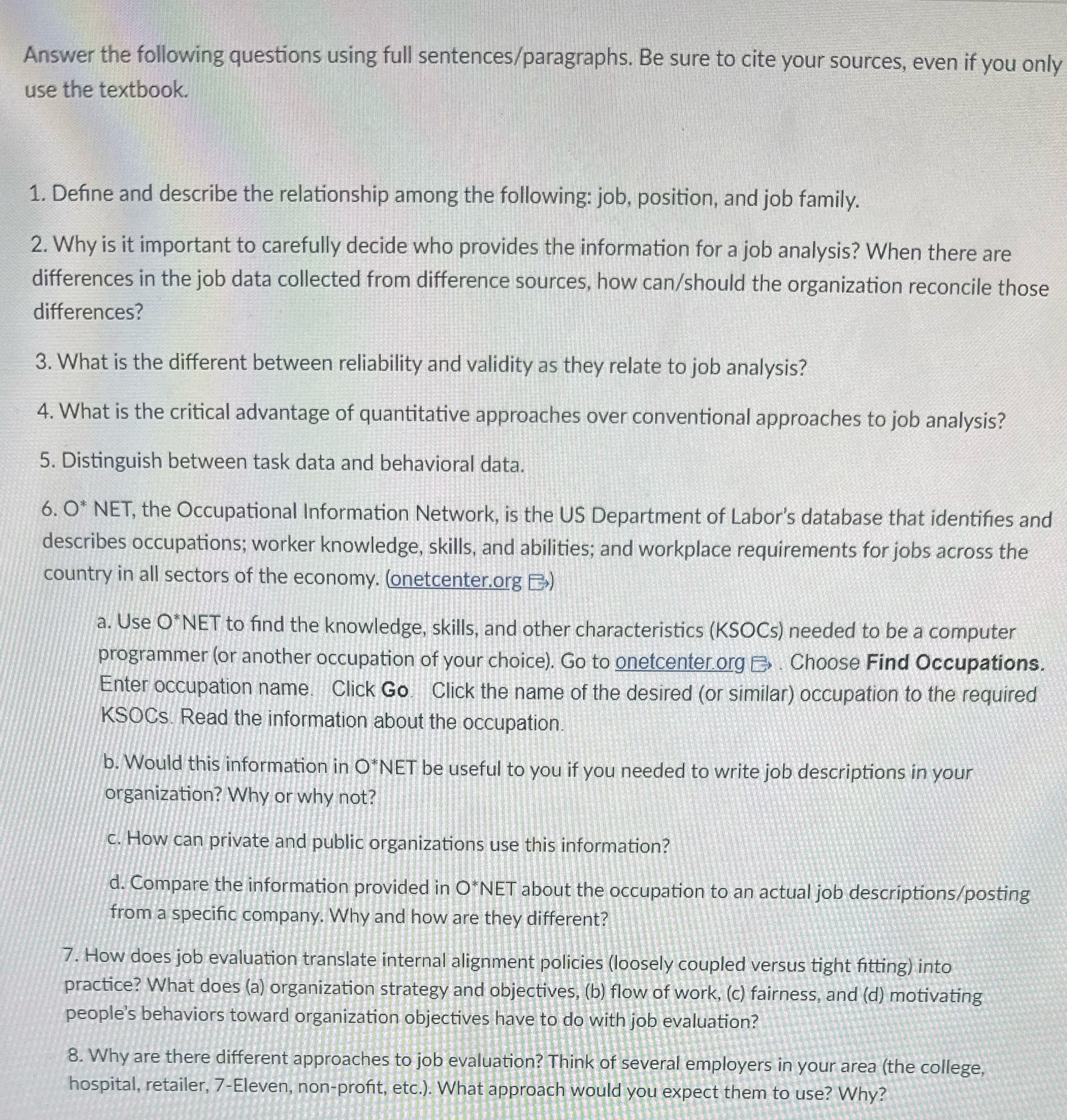Answer the following questions using full sentences/paragraphs. Be sure to cite your sources, even if you only use the textbook. 1. Define and describe the relationship among the following: job, position, and job family. 2. Why is it important to carefully decide who provides the information for a job analysis? When there are differences in the job data collected from difference sources, how can/should the organization reconcile those differences? 3. What is the different between reliability and validity as they relate to job analysis? 4. What is the critical advantage of quantitative approaches over conventional approaches to job analysis? 5. Distinguish between task data and behavioral data. 6. O* NET, the Occupational Information Network, is the US Department of Labor's database that identifies and describes occupations; worker knowledge, skills, and abilities; and workplace requirements for jobs across the country in all sectors of the economy. (onetcenter.org .) a. Use O'NET to find the knowledge, skills, and other characteristics (KSOCs) needed to be a computer programmer (or another occupation of your choice). Go to onetcenter. org E. . Choose Find Occupations. Enter occupation name. Click Go Click the name of the desired (or similar) occupation to the required KSOCs. Read the information about the occupation. b. Would this information in OfNET be useful to you if you needed to write job descriptions in your organization? Why or why not? c. How can private and public organizations use this information? d. Compare the information provided in ONET about the occupation to an actual job descriptions/posting from a specific company. Why and how are they different? 7. How does job evaluation translate internal alignment policies (loosely coupled versus tight fitting) into practice? What does (a) organization strategy and objectives, (b) flow of work, (c) fairness, and (d) motivating people's behaviors toward organization objectives have to do with job evaluation? 8. Why are there different approaches to job evaluation? Think of several employers in your area (the college, hospital, retailer, 7-Eleven, non-profit, etc.). What approach would you expect them to use? Why







